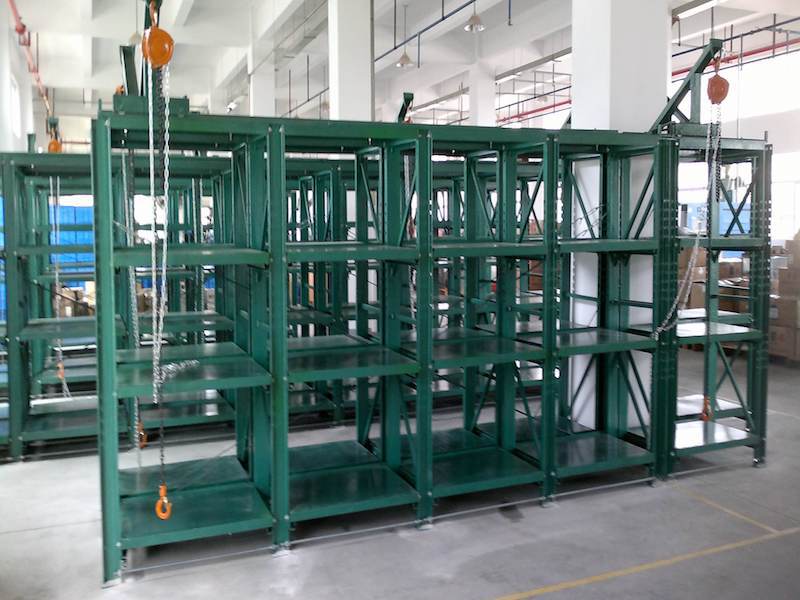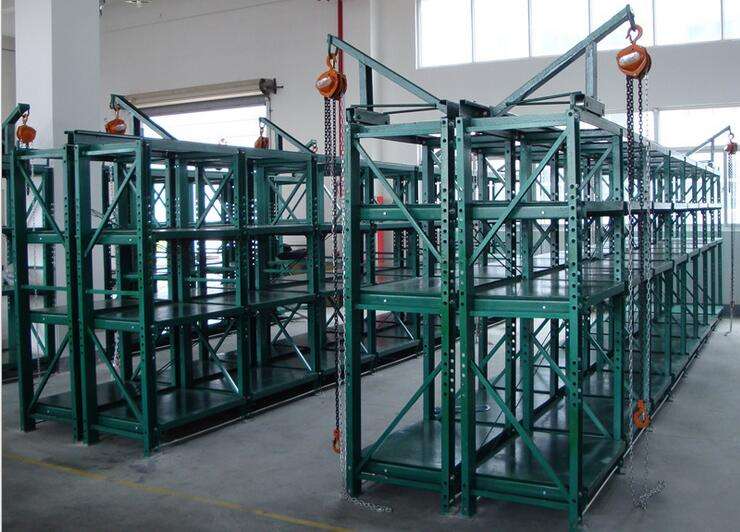In the relentless pursuit of efficiency and space optimization within warehouses, factories, and distribution centers, estanterias industriales (industrial racking systems) stand as the fundamental backbone. Far more than simple shelves, these engineered structures are critical for organizing inventory, maximizing vertical space, streamlining operations, and ensuring safety. Understanding the nuances of different estanterias industriales types, their benefits, selection criteria, and proper implementation is paramount for any business aiming to optimize its logistics and storage capabilities. This comprehensive guide delves deep into the world of industrial racking, empowering you to make informed decisions for your facility.

1. Understanding Estanterias Industriales: Types and Core Functions
Estanterias industriales encompass a wide range of engineered storage solutions designed specifically to handle the demanding environment of industrial settings. Unlike commercial shelving, they are built to bear significant weight, withstand constant use, and adapt to various storage methodologies. Their core function is to provide safe, organized, and space-efficient storage for palletized goods, bulk items, or smaller bins, directly impacting inventory management and operational flow.
Key types include:
Selective Pallet Racking: The most common estanterias industriales. Offers direct access to every pallet location via aisles. Ideal for high-SKU environments with frequent access to all items. Load beams are adjustable, offering flexibility.
Drive-In/Drive-Thru Racking: Maximizes storage density by eliminating many aisles. Forklifts drive directly into the rack structure to store and retrieve pallets. Best suited for high-volume storage of homogeneous products with lower rotation (LIFO for Drive-In, FIFO possible with Drive-Thru). Crucial estanterias industriales for cold storage or bulk goods.
Push Back Racking: Utilizes carts on inclined rails within each bay. New pallets are loaded from the front, pushing previously loaded pallets back. Retrieval follows LIFO. Offers good density (deeper than selective) with better selectivity than Drive-In. A versatile estanterias industriales solution.
Pallet Flow Racking: A high-density, high-throughput estanterias industriales system. Uses gravity-fed roller or wheel tracks on a slight incline. Pallets are loaded at the higher end and flow towards the pick face (FIFO). Excellent for perishables, high-turnover items, or automated interfaces.
Cantilever Racking: Designed for long, bulky, or irregularly shaped items like lumber, pipes, rolls, or furniture. Features strong vertical columns with projecting arms, eliminating front columns for unobstructed loading/unloading. Essential estanterias industriales for specific industries.
Mezzanines: Create elevated work platforms or storage areas, effectively doubling usable floor space without expanding the building footprint. Often integrated with other estanterias industriales below or on the platform.
Mobile Racking: Mounts entire rows of selective racking onto motorized bases on rails. Aisles are created only when needed, significantly increasing storage density (up to 80% more than static systems). A high-density estanterias industriales solution where space is extremely costly.
2. The Compelling Advantages of Implementing Estanterias Industriales
Investing in the right estanterias industriales delivers a cascade of tangible benefits that directly impact the bottom line:
Maximized Storage Density and Cube Utilization: The primary driver. By safely storing goods vertically, estanterias industriales dramatically increase storage capacity within the same floor area. High-density systems (Drive-In, Push Back, Pallet Flow, Mobile) take this further by minimizing aisle space. Utilizing the often-underused vertical cubic space is fundamental to warehouse efficiency.
Enhanced Organization and Inventory Control: Properly designed estanterias industriales systems bring order to chaos. Designated locations for every SKU streamline put-away and picking processes. This organization drastically reduces search times, picking errors, and misplaced inventory, leading to more accurate stock counts and better overall inventory management.
Improved Operational Efficiency and Productivity: Easy access to goods translates directly into faster order fulfillment. Efficient workflows enabled by well-planned estanterias industriales layouts minimize travel time for personnel and equipment. Faster picking, replenishment, and cycle counting contribute significantly to higher throughput and lower operational costs.
Increased Safety: Engineered estanterias industriales, when properly installed, maintained, and loaded, provide a structurally sound environment. Features like column protectors, rack guards, and integrated safety locks help prevent accidents. Organized storage reduces clutter and trip hazards. Properly stored goods are less likely to fall or shift dangerously.
Scalability and Flexibility: Modern estanterias industriales are designed with adaptability in mind. Adjustable beam levels allow reconfiguration for different pallet or product sizes. Systems can often be expanded or reconfigured as storage needs evolve, protecting your initial investment. Modular designs offer long-term value.
Protection of Goods: Keeping inventory off the floor protects it from potential water damage, dirt, and pests. Organized storage within estanterias industriales also minimizes the risk of product damage caused by improper stacking or handling impacts.

3. Critical Factors in Selecting the Right Estanterias Industriales
Choosing the optimal estanterias industriales system is not a one-size-fits-all proposition. Careful analysis of specific requirements is essential:
Product Characteristics: Weight, dimensions (pallet size, product height), shape (standard pallets, long loads?), fragility, and temperature requirements (e.g., cold storage) are paramount. This dictates load capacity needs and influences system type (e.g., cantilever for long items).
Inventory Profile & Turnover (SKU Velocity): How many unique SKUs? What are their quantities? How quickly do they move (FIFO vs. LIFO requirements)? High-SKU, high-turnover environments favor selective racking. High-volume, low-SKU, slower-moving goods suit Drive-In or Push Back. FIFO requirements point strongly towards Pallet Flow.
Handling Equipment: The type, size (including mast height and fork length), and capabilities of your forklifts or automated guided vehicles (AGVs) directly determine required aisle widths and overall system design compatibility. Narrow aisle (NA) forklifts enable very high-bay estanterias industriales with narrow aisles.
Available Space and Building Constraints: Ceiling height, floor condition, column locations, door placements, and overall building dimensions are critical physical constraints. Floor load capacity must be verified. Estanterias industriales must fit within these parameters while maximizing usable space.
Budget: Costs vary significantly between system types (Selective generally being the most economical base, Mobile being premium) and based on features, height, and required safety accessories. Consider total cost of ownership (TCO), including installation, potential floor preparation, and long-term maintenance, not just the initial rack purchase price.
Future Growth: Anticipate future needs. Will your SKU count, volumes, or product types change? Choose estanterias industriales that offer scalability or can be reconfigured relatively easily.
4. Professional Installation and Maintenance: Ensuring Safety and Longevity
The structural integrity and safety of your estanterias industriales depend heavily on proper installation and diligent maintenance. Cutting corners here is a significant risk.
Professional Installation is Non-Negotiable: Estanterias industriales must be installed according to the manufacturer's specifications and relevant engineering standards (like EN 15635 in Europe or RMI/ANSI MH16.1 in the US) by certified installers. This ensures:
Correct anchoring to the floor (critical for seismic zones and stability).
Perfect vertical alignment (plumb).
Secure beam connections at the correct heights.
Proper integration of safety features.
Comprehensive Floor Preparation: The floor must be level, clean, and have adequate load-bearing capacity. Often, specific anchor types or even floor reinforcement may be required, identified during a professional site survey prior to installing estanterias industriales.
Ongoing Inspection and Maintenance: Like any critical infrastructure, estanterias industriales require regular care:
Scheduled Inspections: Conducted by trained personnel (internal or external) at defined intervals (e.g., quarterly, annually, after impacts). Follow a formal checklist covering damage, alignment, safety devices, and load compliance.
Immediate Reporting and Repair: Any observed damage (bent beams, damaged uprights, missing/damaged safety locks, dislodged anchors) must be reported immediately. Affected sections should be offloaded and repaired promptly using OEM-approved parts and procedures. Never operate damaged estanterias industriales.
Load Management: Strictly adhere to the posted load capacities and beam level configurations. Uneven loading or exceeding capacity compromises structural integrity. Use proper pallets and ensure loads are stable and centered.
Training: Personnel working near or operating equipment around estanterias industriales must be trained on safe practices, including awareness of rack components, understanding load signs, and proper procedures for reporting damage.
5. Safety First: Protocols and Best Practices for Estanterias Industriales
Safety is the paramount concern when dealing with estanterias industriales. A collapse or falling load can have catastrophic consequences.
Adherence to Standards: Compliance with national and international safety standards (EN 15635, RMI/ANSI MH16.1, OSHA guidelines) is mandatory. These cover design, installation, inspection, use, and maintenance of estanterias industriales.
Impact Protection: Implement robust measures to protect uprights from forklift impacts:
Column Protectors (Rack Guards): Steel guards bolted to the front of uprights at ground level.
Aisle Barrier Systems: Bollards or barriers at the end of aisles.
Wheel Guards: Protection for uprights at corners or vulnerable points.
Load Signs and Configuration Control: Clear, visible load signs must be posted on every bay, indicating maximum load capacity per beam level and per bay. Maintain strict control over beam level heights and configurations; unauthorized changes are dangerous.
Proper Housekeeping: Keep aisles clear of debris, obstructions, and stray pallets. Ensure good lighting throughout the warehouse, especially within racking aisles.
Safe Loading Practices:
Pallets must be in good condition.
Loads must be stable, evenly distributed, and not overhang beams excessively.
Pallets must be fully supported by beams on both sides.
Never climb on estanterias industriales; use approved order pickers or ladders.
Damage Response Protocol: Establish and enforce a clear, zero-tolerance policy for damaged estanterias industriales. Define immediate actions: offload affected area, tag out, report, and repair by professionals.
Regular Safety Audits: Go beyond inspections; conduct audits focusing on operational practices, training adherence, and overall safety culture concerning the estanterias industriales.
Estanterias industriales are far more than a storage expense; they are a strategic investment in the operational heart of your business. Choosing the right system – whether it's versatile selective racking, high-density drive-in systems, dynamic push-back, efficient pallet flow, specialized cantilever, space-maximizing mezzanines, or ultra-dense mobile racking – requires careful consideration of your unique product mix, operational flows, space constraints, and growth trajectory.
The benefits of optimized estanterias industriales permeate every aspect of warehouse performance: dramatic space savings, enhanced organization, accelerated productivity, improved inventory accuracy, and, most crucially, a safer working environment. However, realizing these benefits hinges on professional installation, rigorous adherence to load capacities, unwavering commitment to regular inspections and maintenance, and embedding a strong safety culture. By partnering with reputable suppliers and installers and prioritizing safety and proper management, your estanterias industriales will serve as a reliable, efficient, and safe foundation for your logistics success for years to come.







